Of course I won’t provide conclusive answers to those questions. In truth, this is just my first, humble attempt to grow accustom to my equipment and its peculiarities and frequency responses. But one purpose of this blog is to document my projects and the bottom line of all of this is of course: it’s fun to dig into your music and audio signals using your computer. :)
Equipment and software
I will use the software presented in my last post on spectral analysis. Brianalyse is used for the visualization and comparison of the spectra and Jaaa for obtaining an average of the individual spectra.
For the recording procedure itself I’ll use a BC Rich Stealth guitar, a Blackstar HT-5 combo valve amp, a Shure SM58 (coil microphone), and a Tascam TM-80 (condenser microphone). In addition I use a Tascam US-2x2 external sound card and Behringer MS40 speakers. Both the amp and the speakers are fixed in an (arbitrary) equalization setup.
I decided not upload the corresponding sound files. It’s 187 MB in total (uncompressed) and I don’t want to spam my Git repository.
Setup
The main objective is to determine the difference in the recording depending on whether or not it traveled through air.
My hypotheses why this might be the case are the following (yes, I’m a physicist :D): 1. Due to the modulation caused by the master gain and the speaker of the amplifier 2. Due to the modulation caused by the microphone 3. Due to the modulation caused by an arbitrary speaker
To test these hypotheses (the corresponding one in brackets) I will record a piece of audio in several ways 1. Record both the output of the amp using a microphone and the line-out signal (1) 2. Perform the first test using a different microphone (2) 3. Capture the playback of the line-out signal using a microphone via the monitors of my computer (3)
Since the line-out signal is composed of the guitar signal + the modulation of the pre-amp + the equalization of the amplifier, it’s an appropriate starting point. Using test number 1 and 3 I can compare two different sets of master gain and speaker modulation on the same signal (modulo the effect of analog-digital-analog conversion and the pre-amp of the external sound card for test 3).
Results
Impact of the microphone
First, let’s have a look on what the microphone is doing with our signal.
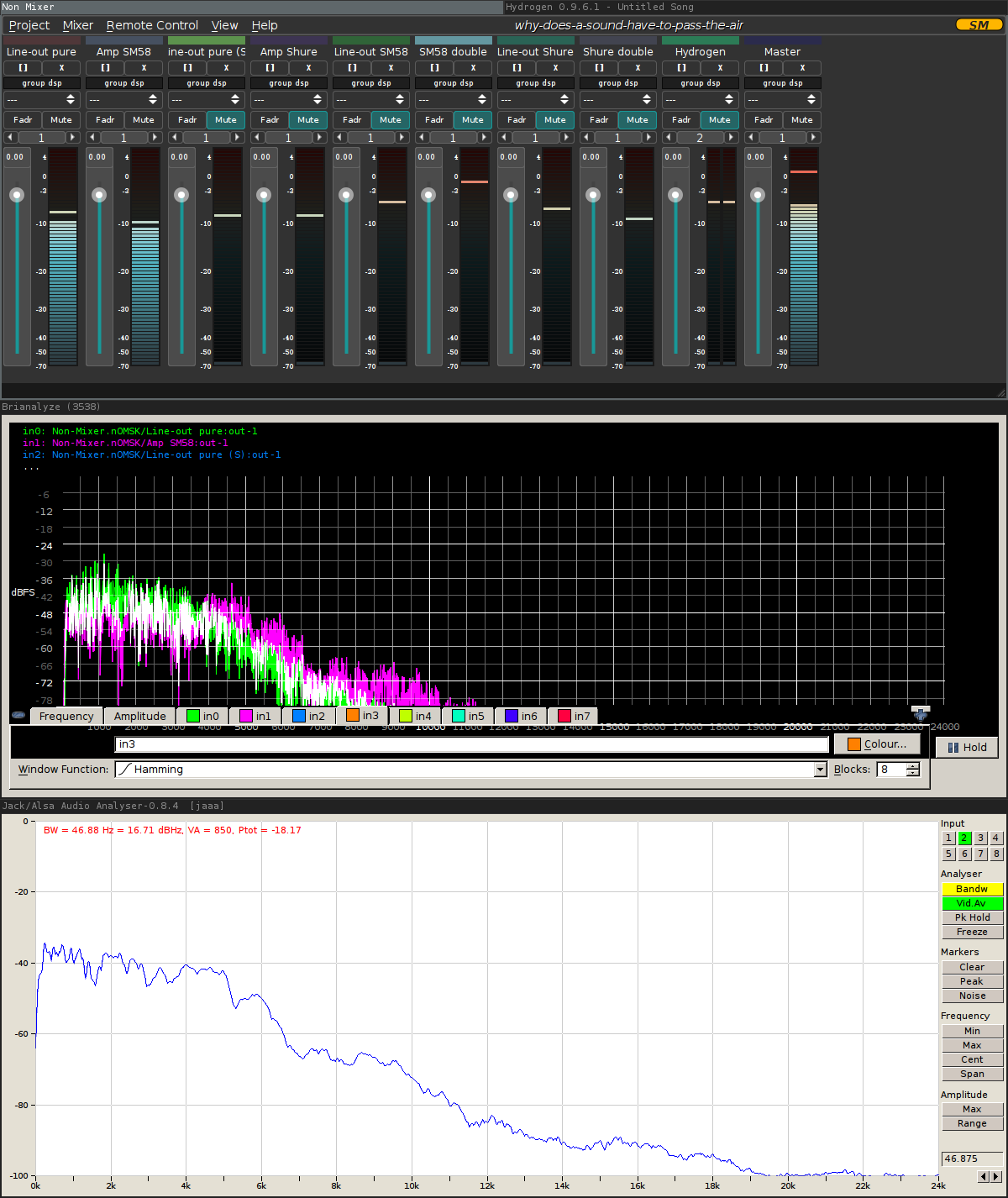
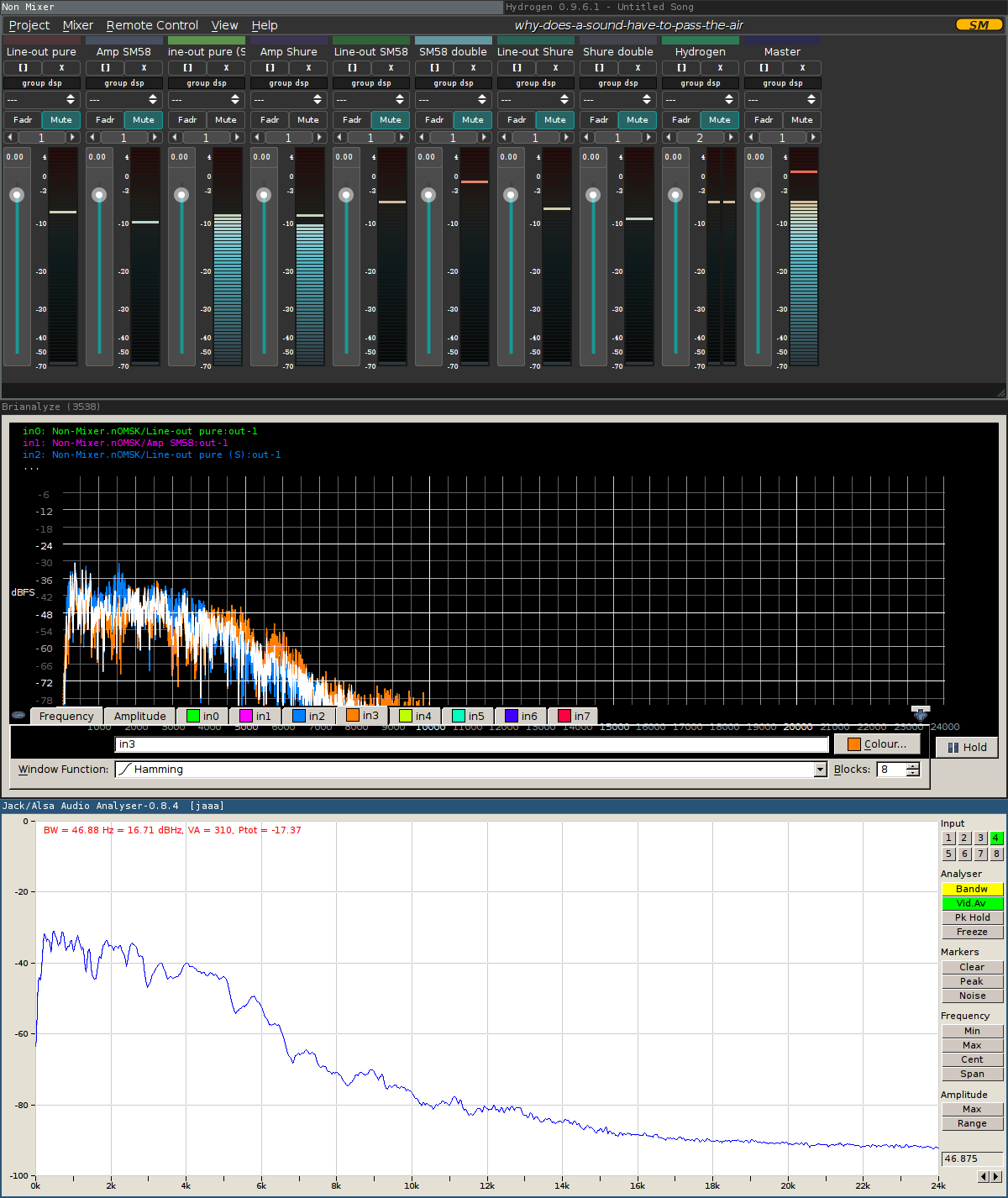
(The TM-80 channels have the wrong label Shure in them, sorry).
In the top picture you can see the spectrum of the SM58 microphone picking up the audio signal of the amplifier (using the internal master gain and speaker). The bottom picture displays the same setup but using the TM-80 instead.
The SM58 has a much bigger response in the high frequency band from 7kHz till 11kHz resulting in a harsh sound. The TM-80, on the other hand, is boosting the lower and mid frequencies up to 3kHz and has a more round and warm sound.
Impact of the speaker
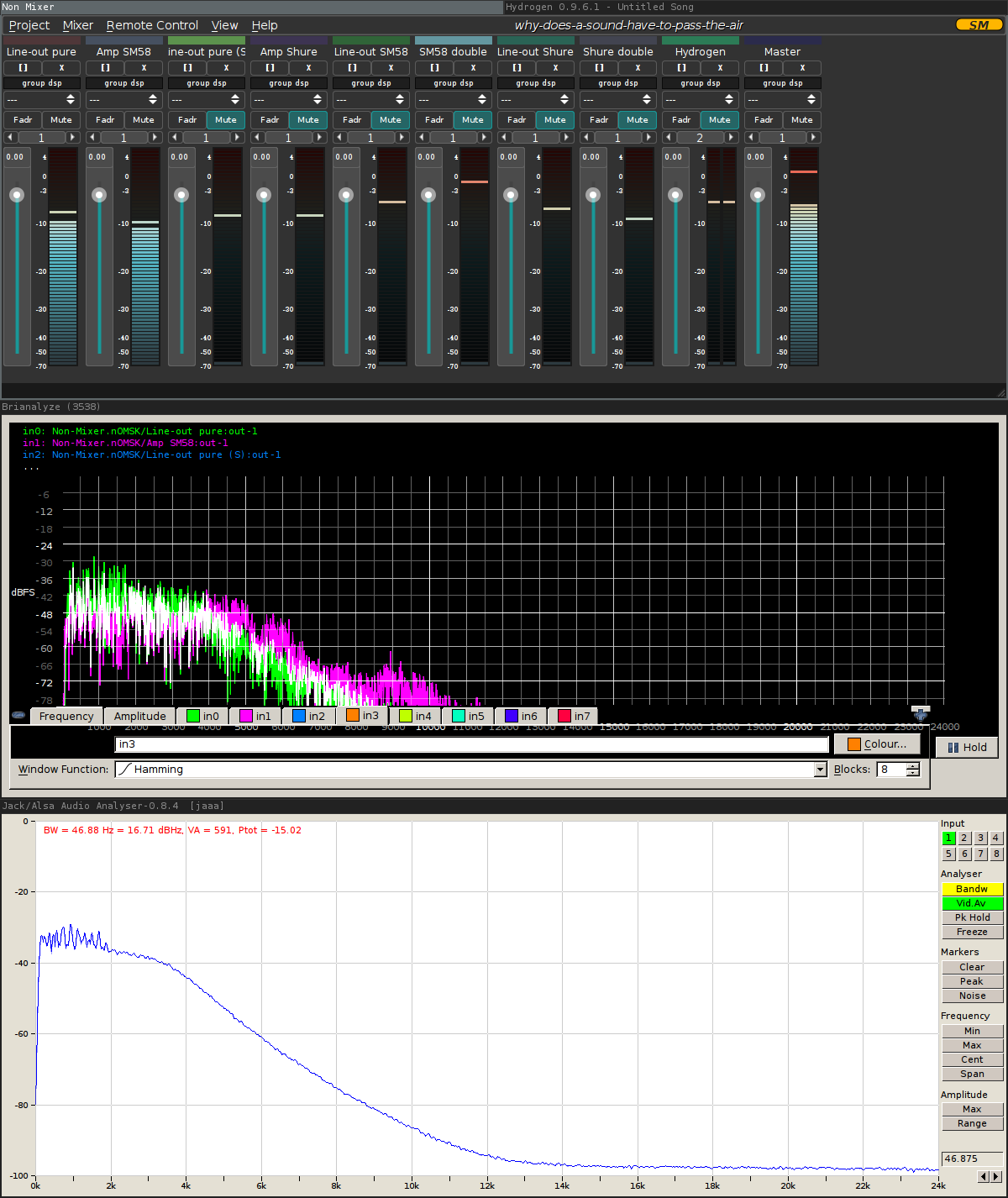
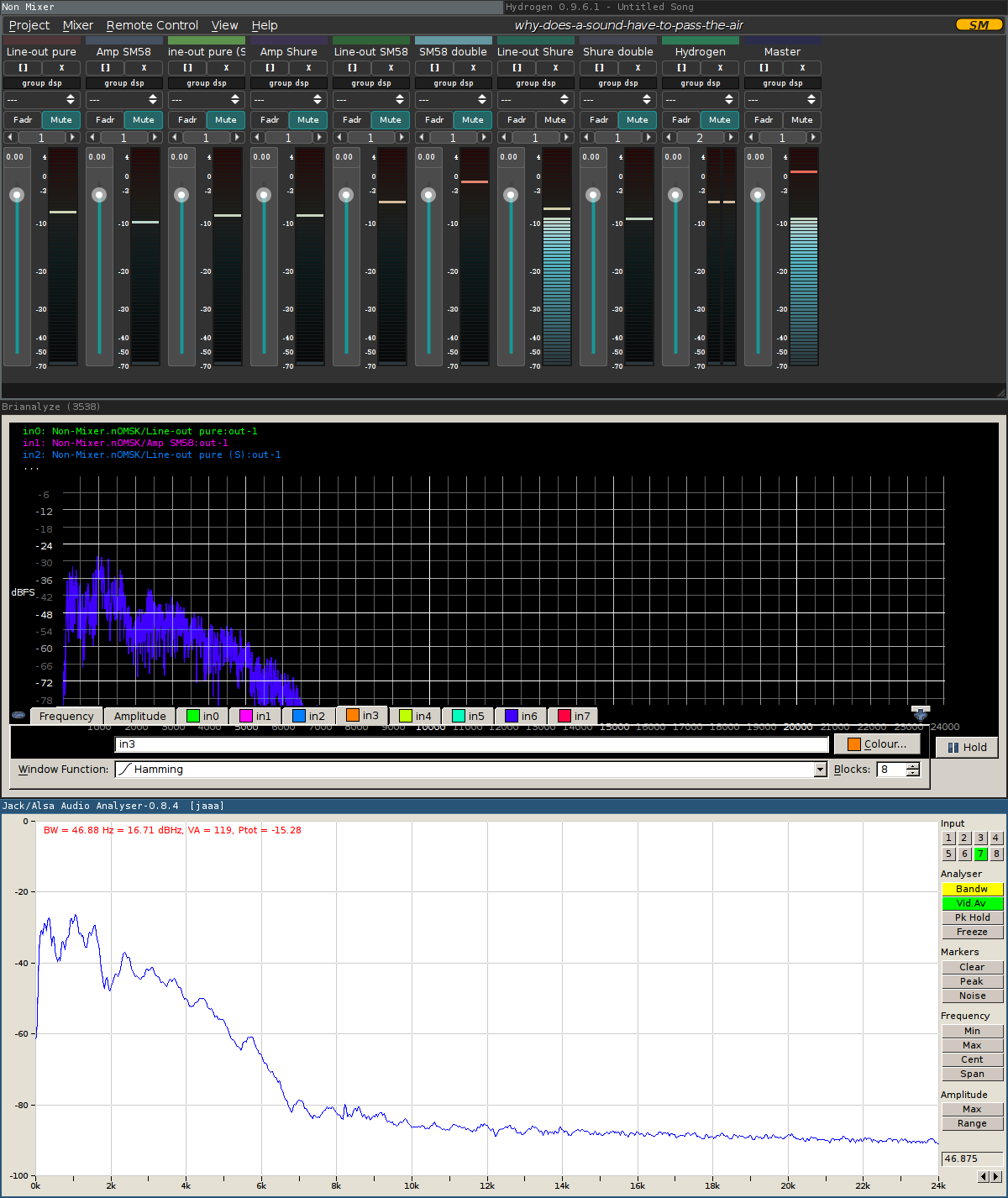
In the two figures above you can see spectrum of the raw line-out signal (top) and the line-out signal played back using the Behringer monitors and captured using the TM-80 (bottom).

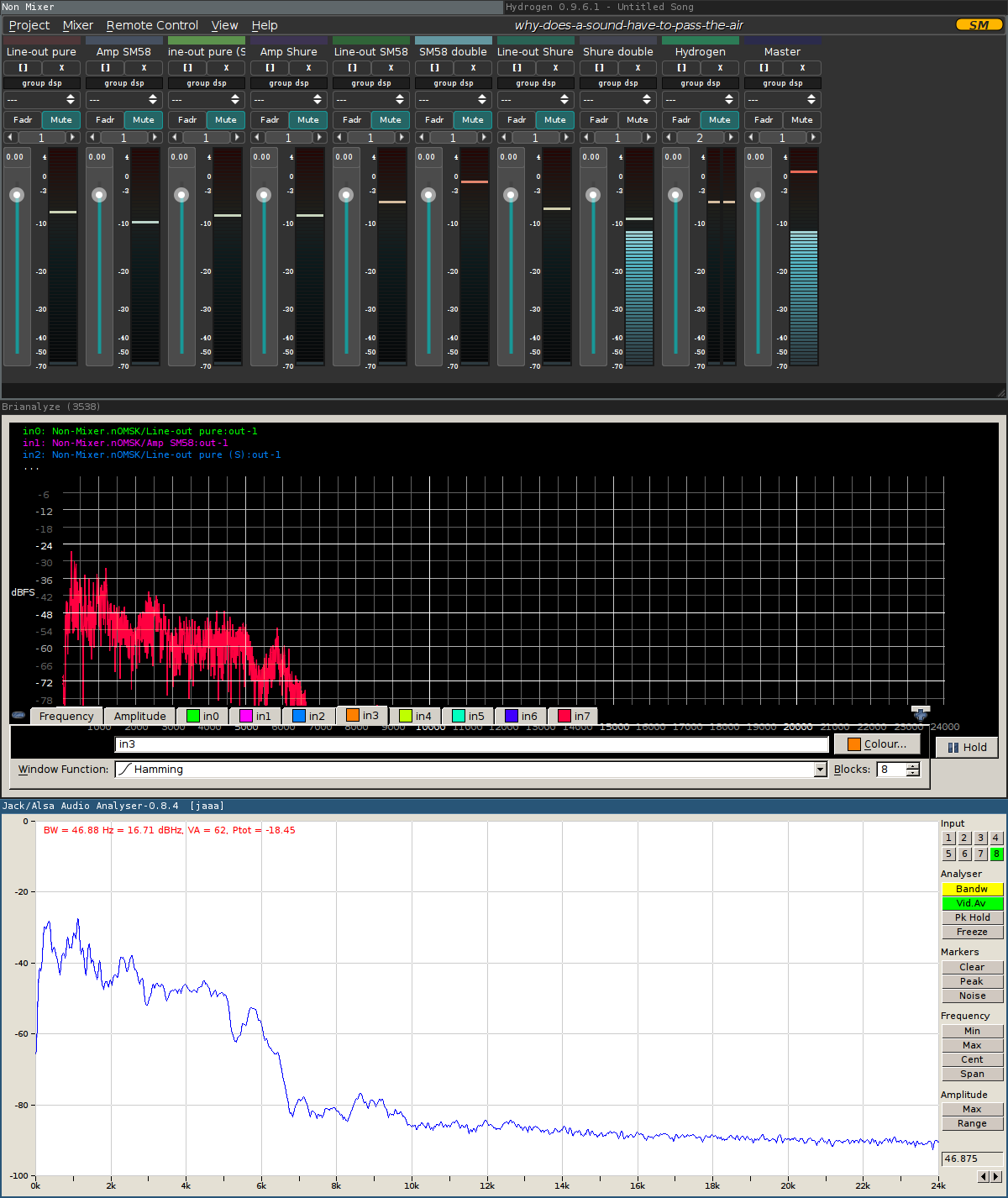
Those figures display the spectra of the amp captured by the TM-80 (top) and this very signal again played back using the monitors and captured again using the TM-80 (bottom).
By comparing the pure line-out signal with the one captured in front of the amp one can see quite beautifully how much character in the frequency range between 4kHz and 12kHz is introduced by the master gain and the speaker of the amplifier.
On the other hand, by comparing the latter signal or the line-out with the one obtained by capturing the playback of the line-out it is also obvious how brutally my monitors just cuts off the signal at 7kHz, damps the whole mid range, and boosts the lower one. With its bass and treble settings being both set to default I’m quite puzzled about this behaviour. Hmm… I wasn’t aware of this and definitely have to look into this matter in more detail.
Last, we compare the captured signal of the amplifier with the same signal played back through the monitors and recaptured again. My hope was to separate the modulation introduced by the microphone and the one introduced by the speaker. Some of the peaks in the spectrum are definitely enhanced in the recaptured signal and a ugly resonance was introduced in the very low frequencies (even worse for the SM58). But in the end these two modulations are way to convoluted to keep them apart.
Conclusion
So, is there a good reason to invest in a combo amp or a head-box combination instead of using just a rack amplifier? Yes, there is.
The master gain and speaker of the box are introducing a lot of energy in the mid and high frequency range. This gives the signal more warmth and definition. The choice of the microphone does, of course, also matter. But the latter is just introducing a colouring and is not as important as the amp itself.
Another thing I’ve learned is, that the monitors I use with my computer have a quite odd frequency range with a lot of damping in the mids and a cut-off at 7kHz. (Or is some software component responsible for this behaviour?) So it’s definitely worth checking out one’s equipment properly.